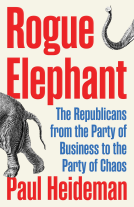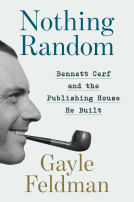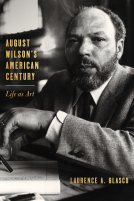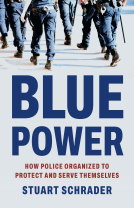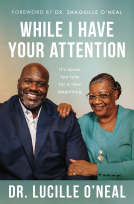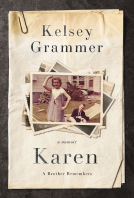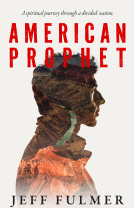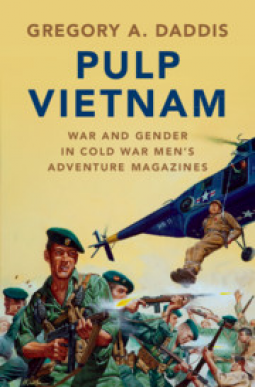
Pulp Vietnam
War and Gender in Cold War Men's Adventure Magazines
by Gregory A. Daddis
This title was previously available on NetGalley and is now archived.
Send NetGalley books directly to your Kindle or Kindle app
1
To read on a Kindle or Kindle app, please add kindle@netgalley.com as an approved email address to receive files in your Amazon account. Click here for step-by-step instructions.
2
Also find your Kindle email address within your Amazon account, and enter it here.
Pub Date Oct 15 2020 | Archive Date Oct 22 2020
Talking about this book? Use #PulpVietnam #NetGalley. More hashtag tips!
Description
In this compelling evaluation of Cold War popular culture, Pulp Vietnam explores how men's adventure magazines helped shape the attitudes of young, working-class Americans, the same men who fought and served in the long and bitter war in Vietnam. The "macho pulps" - boasting titles like Man's Conquest, Battle Cry, and Adventure Life - portrayed men courageously defeating their enemies in battle, while women were reduced to sexual objects, either trivialized as erotic trophies or depicted as sexualized villains using their bodies to prey on unsuspecting, innocent men. The result was the crafting and dissemination of a particular version of martial masculinity that helped establish GIs' expectations and perceptions of war in Vietnam.
By examining the role that popular culture can play in normalizing wartime sexual violence and challenging readers to consider how American society should move beyond pulp conceptions of 'normal' male behavior, Daddis convincingly argues that how we construct popular tales of masculinity matters in both peace and war.
Available Editions
| EDITION | Hardcover |
| ISBN | 9781108493505 |
| PRICE | $29.95 (USD) |
Average rating from 9 members
Featured Reviews
A well illustrated, semi-academic text that takes an indepth look at pulp magazines from the 1950s to the 1970s, and how the stories they published may have influenced men's behaviour during wars, most pointedly the Vietnam War.
(When I say 'semi-academic', I just mean that the book has the thoroughness of an academic study, but not the structural rigidness of such texts. In short: it's easily readable.)
Daddis has worked through what must be a small mountain of magazines, and uses many examples to construct an image of what these magazines saw as a 'real man'. Generally the stories were written by seasoned pulp writers who hadn't seen much action themselves, but the idea underpinning all their writing: war makes a man. Young boys grew up with endless stories of the heroic deeds of their own fathers during the Second World War, laced with a sad misogyny. Pulp stories would generally only present women as 'lovelies', prizes to be won during conquest. Furthermore, the stories were filled with barely concealed racism and orientalism. Daddis makes a strong case for the pulp magazines not being directly responsible for civilian abuse, murder and rape, but for them to be part of rape culture. The stories promised war to make men out of these boys, with beautiful foreign ladies throwing themselves at them. When this inevitably didn't happen, it can't be unthinkable that some of those men would vent their frustrations on the local populace.
The first three quarters of the book give a good overview of the kind of stories that were published, and there is quite a few that made me laugh in their cheesiness. But it's the last quarter where things get serious, turning into a mix of the bizarrely uncritical stories that were published during the Vietnam War, and the very real atrocities that were being perpetrated by a sizeable chunk of US soldiers. It is not an easy read, but only goes to strengthen Daddis' central thesis.
Recommended for anyone interested in toxic masculinity, its prominence during the Cold War and the Vietnam War especially.
 Reviewer 500251
Reviewer 500251
I want to start this review by saying that I do not have any type of academic background in the history of the Vietnam War, or gender studies. My thoughts and opinions are entirely based on the experience of reading this book as an interested layperson. With that out of the way, on to the actual review.
In Pulp Vietnam, Daddis introduces the reader to the men’s pulp adventure magazines of the Cold War era. These magazines contained stories that glorified what Daddis refers to as “militarized masculinity,” and explicitly linked military and sexual conquest. The pulp magazines didn't invent these concepts, but their wide circulation and dedication to those ideas certainly helped generate a common language to talk about these cultural norms. The lived experiences of recent veterans who did not find combat to be a path to manhood or crowds of women waiting to grant them sexual pleasure while overseas were never addressed by the pulps. As the young men who read these magazines were drafted to Vietnam, they experienced severe disillusionment.
Prior to this book, I had no knowledge of the genre of pulp adventure magazines, let alone their reach. Daddis is careful to point out that the consumption of these stories cannot be labeled as the cause of violent and racist behaviors exhibited by GIs in Vietnam, but they did help create an image of the world where that violence was normalized. The enduring importance of these fantasies in American culture probably shouldn't have been so surprising to me, but it does make me re-evaluate how we currently portray war and memories of combat today. While I occasionally felt bogged down and as though the book was dragging, it was definitely interesting and made a clear argument. Recommended for people interested in cultural history or the creation of norms around gender expression.
I received a copy of this book from the publisher via NetGalley for an honest review.
 Kevin F, Educator
Kevin F, Educator
Daddis (San Diego State University) provides a compelling account of the attitudes towards war and martial masculinity in the "macho pulp" magazines of the 1950s and 1960s. Courting mainly working class (and presumed white) male readers, these magazines promoted a strict idealization of a type of militaristic service that dangerously tied into ideas of colonialism, the "savagery" of overly sexualized women, and a conqueror ethos that paid little attention to nuance and the experiences of others. Though he doesn't use the word, the war stories and ideas about manhood in these magazines (with titles like STAG, MALE, and BLUE BOOK) resemble exploitation films in their lurid reduction of complex issues into sensational adventure stories that focus on violence and sexual elements.
Daddis aptly points out the somewhat complex line these magazines had to walk, though, in their navigation of Cold War-era taboos (over issues like miscegenation), and their eventual retreat from gung-ho, pro-war positions once public opinion over the Vietnam war began to turn. Through overwhelming examples from the literature (to the point where some sections feel repetitious), the book shows how these pulps sold men on a set of nationalism ideals, exoticism, and sexual prowess, while at the same time providing almost an almost wholly inaccurate account of the experience of going to war, and in the process probably helped promote dangerous attitudes of superiority between G.I.s and the people of Vietnam (especially their allies in the south). He is good on charting the fictional pulp version of the Vietnam war versus the reality, especially when adding the voices of veterans who later protested the war, as well as Vietnamese women, back into the conversation.
The pulps are an exemplary set of "bad objects,"and Daddis rightly criticizes them, even as he informs on their once massive popularity and probably wide sphere of consequence.
Daddis provides a thought provoking analysis of material culture during the Vietnam War. The work is a valuable contribution to cultural history, gender studies, and popular literature. The argument that toxic aspects of hyper-masculinity can be weaponized by the state is not new, but Daddis succeeds in illuminating the way in which it effected soldiers at a deep, subconscious level. I was struck by the way in which Daddis' examples illustrated the connection between the pulps of the 1960s and the tradition of pulp literature dating back three to four decades earlier. Arguably, the masculinity presented in the pulps at the height of the counter-cultural movement of the 60s was, by that time, becoming a relic of the past. However, the author convincingly illustrates the powerful hold these views of 'traditional' masculinity had on men fighting in Vietnam.
This book pairs nicely with Christian Appy's "Working-Class War: American Combat Soldiers in Vietnam" as the later enhances the class analysis present in the above work.
A well illustrated, semi-academic text that takes an in depth look at pulp magazines from the 1950s to the 1970s, and how the stories they published may have influenced men's behavior during wars, most pointedly the Vietnam War. This book is easy to read, approachable, and well written, examining the ways published displays of masculinity shaped cultural values and men throughout the Vietnam War period. As a woman, I found a lot of the source material and columns to be startling and infuriating, but provide a great example of the values of the times. Very interesting to see how things have changed, especially yin considering how women and men are presented in media and what "makes" a man today.
Readers who liked this book also liked:
Laurence A. Glasco
Biographies & Memoirs, History, Nonfiction (Adult)
Scott Michael LeRette
Biographies & Memoirs, Christian, Parenting, Families, Relationships
Jeff Fulmer
General Fiction (Adult), Politics & Current Affairs, Religion & Spirituality
